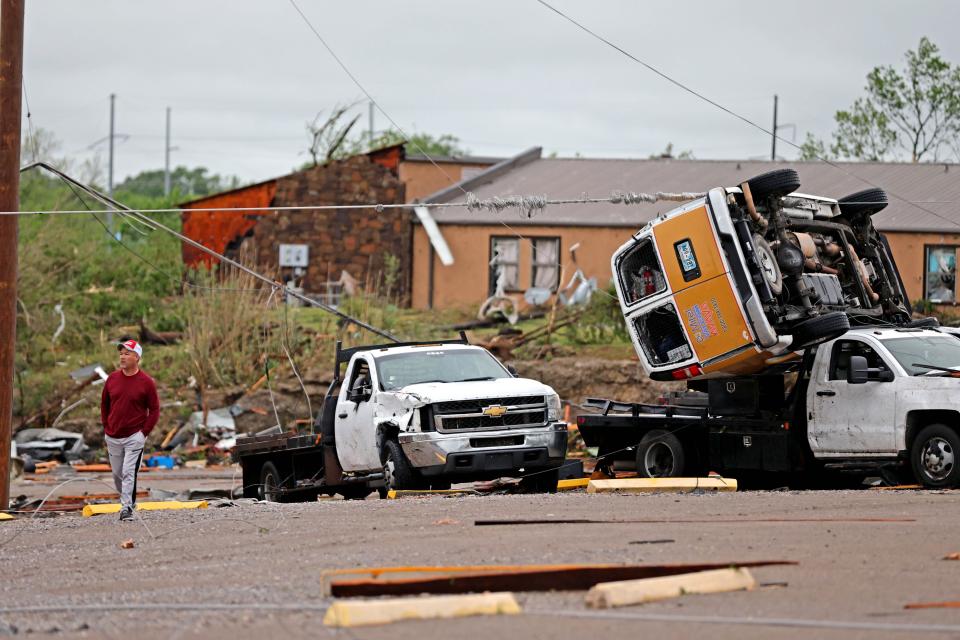Science behind 'Twisters': Can you really 'kill' a tornado? Oklahoma meteorologists explain
After a record-setting year for tornadoes, the release of stand-alone sequel "Twisters" this week is particularly timely.
The disaster film follows two storm chasers on their quest to research the destructive power of tornadoes, while potentially disrupting the twister altogether and mitigating risk.
The premise sounds entertaining, but is it real? Could a modern weather scientist "kill" a tornado?
How do tornadoes work?
Tornadogenesis is a word used to describe the formation process of a funnel. Bruce Thoren, a forecaster at the National Weather Service, said that this process is still not fully understood.
"There's a lot of things are understood, but it's not like a complete picture of, you know, what storm will produce a tornado and which one will not," he said.
Most tornadoes are very weak and only last a few minutes, Thoren said. F4 and F5 tornadoes like those that tore through Oklahoma on May 31, 2013, are the rarities.
Meteorologist Jeff Haby said that forecasters use four major ingredients to identify the risk of severe weather: moisture, lifting, instability and wind shear. However, Thoren confirmed it is these last two that can make the biggest impact in creating a tornado risk.
Picture the air above an asphalt parking lot in Oklahoma's humid and windy late May. The pavement absorbs the heat from the sun and aids in heating the air right above. This hot air rises into a much cooler atmosphere, swirling and mixing in the wind. According to Haby, moving air like this creates instability.
Wind shear, which varies in strength and direction, can push this movement into a spiral, creating a dangerous situation. It is days like this to expect a tornado risk.
Can weather scientists really kill a tornado?
If the new movie does include a device designed to stop a tornado from forming, experts say this device would be more science fiction than accurate science.
"If you wanted to try to do something like that, it would be more on the stronger ones, right, that are on the ground longer and potentially do more damage. But then again, you have to identify that storm," Thoren said.

Even if someone both knew where the tornado would be and knew where to place the device, it still might not be worth it, Thoren explained.
"People had theories of how to do it, but the amount of energy probably needed to do something like that would likely cause more damage than if you allow the tornado to happen," Thoren said. Even though it is not currently possible to stop tornadogenesis on command, he said things might look very different in another 30 years.
"People are really smart and come up with excellent ideas, but we're just not quite there yet," Thoren said.
More: Where were tornadoes in Oklahoma in May? See where storm damage has been reported
Is Dorothy in 'Twister' real? Meet TOTO
In "Twister" (1996), a barrel-shaped device called Dorothy was designed to go inside the tornado and send back data that would be used to create an advanced warning system. This was based on the real device TOTO, both of which are on display at the National Weather Service in Norman.
However, TOTO's center of gravity was too high to stand upright in storms, rendering it unusable, according to NOAA. The closest use of TOTO to an actual tornado was April 29, 1984, near Ardmore, but the device fell over when a weak funnel came too close. Due to logistical and safety issues, TOTO was retired in 1987.
This article originally appeared on Oklahoman: Can you really 'kill' a tornado? 'Twisters' science fact or fiction

